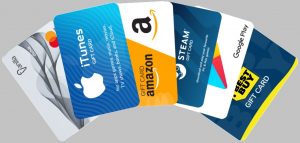Types of Receipts you should know;
A receipt is a document that indicates a transfer of ownership of a valuable substance from one party to another. They are issued in every type of transaction; business-to-business, business-to-customer, stock market, etc.
Receipts are the most basic proof of ownership.
If a customer is to return or exchange an item at a store, it is customary to present the receipt of the item. For warranty purposes, the receipt must have been issued within the acceptable timeframe. When you pay your tax, you need to obtain the receipt as proof of payment.
Receipts can be Digital or Physical
In the digital age, the use of digital receipts is becoming commonplace in the world. Physical receipts are also still in use. The physical and digital receipts both have their pros and cons. The physical receipt is subject to wear and tear, unlike the digital receipt. However, the digital receipt can be lost if there is a hard drive crash; with the advent of cloud technology, the risk is reduced.

Three types of receipt.
The focus of this article is on three types of receipts. These receipts differ based on the mode of payment, they are:
– Cash Receipt
– Debit/Credit Card Receipt
– Activation Receipt
1) Cash Receipts: It is the document that acknowledges the collection of cash during a transaction. The cash receipt is issued by the vendor when a customer pays cash or cash equivalent for the good or service acquired. Customarily, the original copy of the receipt goes to the customer while the duplicate is kept by the seller for documentation.
The issuing business uses the cash receipts to document the cash balance on their balance sheet. It is one of the uses of the cash receipt. For the customer, it is proof of purchase if there is an event of the return of the item.
Some of the details that will be on the cash receipt are
- Date of the transaction.
- Item(s) purchased and the price of the item(s).
- Identification number of the receipt
- Name of the customer
- Cash received and the change (if any)
2) Debit/Credit Card Receipts: These receipts are issued when people pay through their debit or credit cards. Vendors that accept card payments use point-of-sale machines (POS machines). After the transaction happens, the POS releases two receipts.
One of the receipts is for the cardholder, and the other is for the vendor. Online retailers email their customers a copy of their receipt when they make purchases. The customer may then decide to print the receipt.
Some of the perks of debit/credit card receipts are more complex than cash receipts. For example, the card receipt ought to show the cardholder’s card number. However, this exposes the cardholder to fraud. New laws prohibit the receipt from displaying all the numbers on the card. It is part of the laws in America that c card information cannot show on credit card receipts.
For corporations, it is advantageous to use credit/debit cards for payment because of the receipts. Card receipts are a tool in proving your financial records to the tax authorities and the auditors. Individuals can reconcile their monthly statements of accounts with their card receipts. If there are discrepancies, they can lodge complaints at the appropriate quarters with sufficient proof; this is another benefit of the debit/credit card receipt.
The receipt should carry these details;
- Date of the transaction
- Unique reference number
- A part of the account number debited from
- A part of the card number
- Location (Where the transaction happened)
3) Activation Receipt: This is the receipt that shows that the gift card has been successfully activated. When you buy a gift card at a store, you load it with the amount you want it to have. Most gift cards can be loaded with values between $10-$500. The activation receipt is proof that you have activated the gift card.
If you activate the gift card online, then you will get a digital activation receipt. The activation receipt should carry the gift card activation information on the bottom of the back of the receipt.
Payment information such as date of transaction, mode of payment, location of the vendor, and the amount loaded on the card will be on the receipt. The activation information will contain the activation code, the last four digits of the gift card.
Gift cards are activated through various means; physically, online, through the phone, etc. Whichever way you choose to activate the gift card; you should receive a receipt if any issues pop up in the future.
Conclusion
Different factors make for varieties of receipts; the kind of transaction, the mode of payment, the value involved in the transaction, etc. Cash receipts are generic for all forms of transactions that have cash involvement. The same goes for card receipts; vendors issue them in transactions that involve credit/debit cards. Activation receipts are different; they revolve around the type of transaction rather than the mode of payment.
Astro Africa remains the best platform to pay bills in Nigeria and Ghana. Click here to register and get started.



